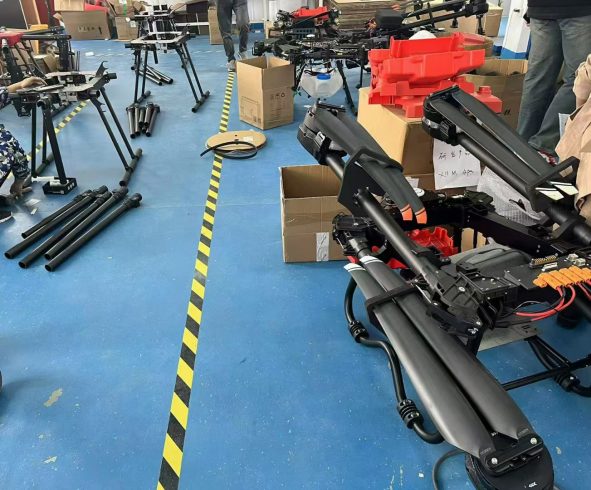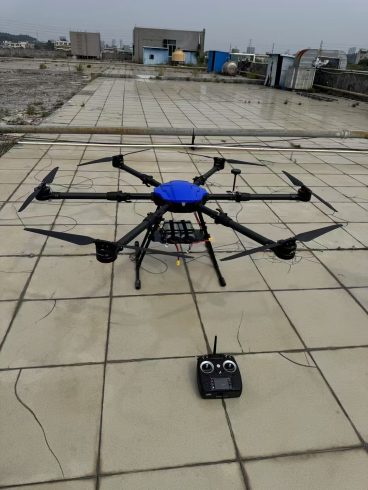![图片[1]-Drone Sprayers for Large Farms: Scaling Efficiency and Sustainability in Modern Agriculture-msoen](https://www.msoen.com/wp-content/uploads/2025/04/27fe7401e7184641-1024x768.jpg)
Large-scale farms face immense pressure to optimize productivity while minimizing environmental impact. Drone sprayers have emerged as a transformative solution, enabling operators of 500+ acre estates to tackle labor shortages, reduce input costs, and meet stringent sustainability targets. This article explores how advanced drone sprayers are reshaping large-scale agriculture, offering actionable insights for implementation.
- Why Large Farms Need Specialized Drone Sprayers
Traditional spraying methods struggle to meet the demands of industrial agriculture:
- Labor Shortages: Manual spraying requires 10–20 workers per 1,000 acres.
- Time Constraints: Tractors/planes take weeks to spray vast fields, risking pest/disease spread.
- Environmental Compliance: Blanket spraying leads to chemical overuse, violating EPA/Farm to Fork regulations.
Drone sprayers solve these challenges with:
- 10–20x faster coverage (50–100 acres/hour per drone).
- AI-powered precision reducing chemical use by 40–60%.
- Real-time compliance reporting for audits.
- Technical Requirements for Large-Scale Drone Sprayers A. High-Capacity Hardware
- Payload: 20–30L tanks for uninterrupted operations.
- Battery System: 25–30 minutes flight time + swappable batteries (6–8 packs/day).
- Durability: IP67 waterproofing and dustproof motors for 18-hour daily use. B. Advanced Autonomy
- Swarm Intelligence: Control 10–20 drones via a single interface, covering 500–1,000 acres/day.
- AI Obstacle Avoidance: LiDAR and 360° cameras for safe navigation around silos, pivots, or livestock.
- RTK-GPS: Centimeter-level accuracy for overlapping field zones. C. Data Integration
- Farm Management Software Compatibility: Sync with John Deere Operations Center, Climate FieldView, or Farmlogs.
- Predictive Analytics: Forecast pest outbreaks using historical data + weather models.
- ROI Breakdown for 1,000-Acre Farms Cost Factor Tractor/Plane Spraying Drone Spraying Savings Labor $25,000 $5,000 (1 operator) $20,000
Chemicals $80,000 $48,000 (40% less) $32,000
Fuel/Energy $15,000 $1,500 $13,500
Equipment Depreciation $10,000 $6,000 $4,000
Total Annual Cost $130,000 $61,500 $68,500 Saved
Note: Assumes $25,000 initial drone investment (paid off in Year 1).
- Case Study: 5,000-Acre Wheat Farm in Kansas
- Challenge: Herbicide-resistant weeds and labor shortages.
- Solution: Deployed 15 drones with 20L tanks and swarm intelligence.
- Results:
- Time Saved: 3 weeks → 5 days per spraying cycle.
- Cost Reduction: $275,000/year saved on labor and chemicals.
- Yield Gain: 12% increase due to even coverage and timely treatments.
- Implementation Guide for Large Farms Step 1: Fleet Sizing
- Formula: Number of Drones = Total Acres ÷ (Drone Daily Capacity × Operating Days)
- Example: 2,000 acres ÷ (50 acres/day × 10 days) = 4 drones. Step 2: Infrastructure Setup
- Charging Stations: Solar-powered hubs every 500 acres.
- Chemical Mixing Centers: Centralized depots with automated refill systems. Step 3: Team Training
- Certification: FAA Part 107 (U.S.) + local ag-aviation licenses.
- Data Literacy: Teach agronomists to interpret NDVI maps and AI recommendations.
- Overcoming Large-Scale Challenges A. Regulatory Compliance
- Airspace Coordination: Use automated NOTAM (Notice to Airmen) filings for FAA-approved flight paths.
- Chemical Logs: Blockchain-integrated drones generate audit-ready reports. B. Maintenance at Scale
- Predictive Maintenance: AI alerts for motor wear or nozzle clogs before failures.
- Mobile Repair Units: On-site technicians during peak seasons. C. Weather Adaptability
- Wind Resistance: Drones with 12–15 m/s tolerance for windy plains.
- Rain Sensors: Auto-pause spraying during precipitation.
- Future Innovations for Large Farms
- 5G-Enabled Swarms: Real-time coordination across 10,000+ acres.
- Hydrogen Fuel Cells: 2-hour continuous flight for uninterrupted operations.
- Quantum Sensors: Detect pesticide residue at molecular levels for residue-free harvests.
Conclusion: Industrial Agriculture’s Aerial Revolution
For large farms, drone sprayers aren’t just tools—they’re strategic assets driving profitability and sustainability. By adopting swarm-ready, high-capacity models, agribusinesses can future-proof operations against labor crises, climate volatility, and regulatory shifts.
Ready to Scale Your Spraying?
➔ Download Our Free Guide: “Large Farm Drone Implementation: A 2024 Blueprint.”
➔ Book a Demo: See swarm drones in action on a 1,000-acre test field.











暂无评论内容